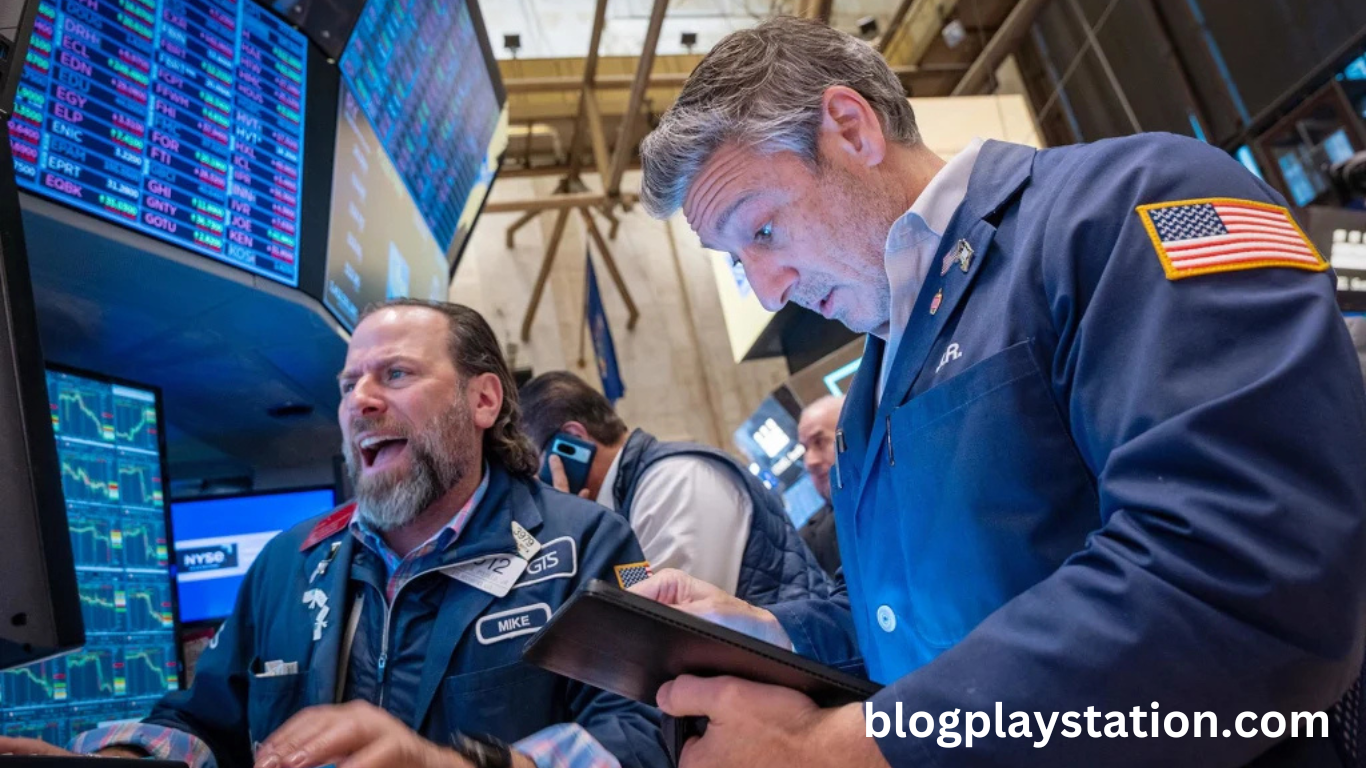Volatility intensified across global financial markets as the Dow Jones Industrial Average plummeted by 2,200 points, marking one of its steepest one-day declines in recent history. A fresh wave of tariff-related tensions triggered panic among investors, with mounting fears over prolonged economic fallout fueling the sell-off.
Investor Sentiment Deteriorates Rapidly
Investor confidence continued to erode as news of retaliatory tariffs between major global economies hit trading floors. The lack of clarity on trade negotiations, coupled with hardline rhetoric from key policymakers, left traders scrambling to minimize exposure. Safe-haven assets such as gold and U.S. Treasury bonds saw a sharp uptick in demand, signaling a broader shift toward risk aversion.
Technology and Industrials Take the Biggest Hit
The tech sector led the decline, with giants like Apple, Microsoft, and NVIDIA facing pressure from concerns about disrupted supply chains and weaker international sales. Industrial stocks followed closely, reflecting investor anxiety over global trade disruptions that directly impact manufacturing, logistics, and cross-border commerce.
Global Ripples From Wall Street’s Slide
Markets in Europe and Asia mirrored the decline, with London’s FTSE 100, Germany’s DAX, and Japan’s Nikkei all closing significantly lower. Currency markets also reacted sharply, with emerging-market currencies losing ground against the dollar, further underlining the widespread impact of escalating trade tensions.
Corporate Earnings Outlook Under Scrutiny
As tariff tensions escalate, analysts are revising corporate earnings forecasts downward, especially for sectors heavily dependent on international markets. Companies with global exposure are warning of weaker revenues ahead, citing increased costs of raw materials, disrupted contracts, and delays in cross-border transactions.
Central Banks Face Renewed Pressure
Central banks, particularly the Federal Reserve, are under growing pressure to intervene as markets spiral. Speculation around potential rate cuts is increasing, though monetary policy alone may offer limited relief if trade hostilities persist. Policymakers face a delicate balance between responding to market turbulence and avoiding premature stimulus.
Retail Investors and Retirement Accounts Feel the Shock
The sudden downturn is also shaking individual portfolios, particularly retirement savings tied to index funds and blue-chip stocks. Financial advisors are urging long-term perspective, but the intensity of the drop is testing the resolve of even seasoned investors. Calls for diversification and safer asset allocation are growing louder.
Political Rhetoric Adds to Market Jitters
Statements from government officials on both sides of the trade divide continue to inject unpredictability into markets. The absence of concrete progress, coupled with aggressive posturing, is creating an environment where uncertainty reigns. Each press conference, tweet, or policy leak becomes a catalyst for rapid market swings.
Volatility Metrics Hit Alarming Highs
The VIX, Wall Street’s “fear gauge,” spiked dramatically, reflecting the heightened level of uncertainty and investor concern. Trading volumes surged as institutional players moved swiftly to hedge positions, while some funds triggered automatic sell-offs as market thresholds were breached.
Eyes on the Next Move Amid Ongoing Turmoil
With no immediate resolution in sight, investors are bracing for continued turbulence. Analysts are tracking upcoming economic indicators, corporate earnings reports, and geopolitical developments for signs of potential stability. Until then, markets remain on edge, navigating through an increasingly complex and chaotic global trade environment.
Frequently Asked Questions
Why did the Dow drop 2,200 points?
The Dow dropped due to heightened trade tensions and uncertainty surrounding new and retaliatory tariffs between major economies.
Which sectors were most affected by the market drop?
Technology and industrial sectors experienced the most significant losses due to supply chain concerns and global demand disruptions.
Are tariffs the only reason for the market decline?
While tariffs are the main factor, investor sentiment, geopolitical instability, and economic slowdown fears also contributed.
How did international markets respond?
Global markets mirrored Wall Street’s decline, with major indices in Europe and Asia posting significant losses.
What are investors doing in response to the market chaos?
Many investors are shifting funds to safe-haven assets like gold and Treasury bonds while reducing exposure to volatile stocks.
Will central banks take action?
There is growing speculation that central banks, including the Federal Reserve, may cut interest rates to stabilize markets.
How are corporate earnings being affected?
Companies are issuing warnings about lower earnings due to increased costs and trade disruptions caused by tariffs.
What should long-term investors do now?
Financial experts advise maintaining a diversified portfolio, staying informed, and avoiding emotional decisions during market turbulence.
Conclusion
The Dow’s 2,200-point plunge highlights deepening concerns over global trade tensions and economic instability. As tariffs continue to impact corporate earnings, investor confidence, and international markets, the outlook remains uncertain. While policymakers and central banks weigh potential responses, investors must navigate the volatility with caution. Staying informed, focusing on long-term goals, and diversifying strategies will be essential for weathering this ongoing storm in global finance.


